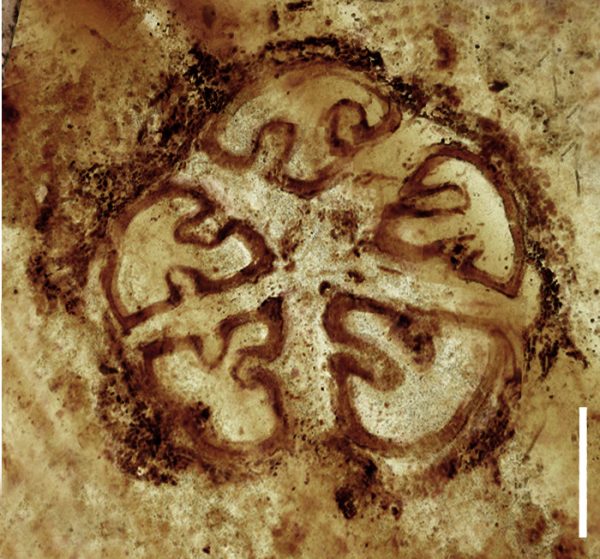
Photo by Steven Machester
Mysterious unidentified fossilized seeds from India, donated to the Cleveland Museum of Natural History in 2005 and stored among the museum’s botany collections, were recently described by a Florida Museum of Natural History researcher as the world’s oldest-known grape species.
Described in the September 2013 issue of the American Journal of Botany, Indovitis chitaleyae pushes the record of the Vitaceae (grape) family into the Late Cretaceous, about 66 million years ago. Researchers have long believed the grape originated during the Cretaceous, though they lacked fossil evidence, said lead author Steven Manchester, Florida Museum curator of paleobotany.
“Visiting the Cleveland Museum collections while working on an unrelated project, I happened across the specimens and was able to recognize the distinctive grape seed outlines within the preserved fruit fossils,” Manchester said. “This helps to solve a mystery about the missing early fossil record of the grape family. DNA evidence suggests that the grapes diverged from the rest of the Rosid family tree, a major group of flowering plants including the apples, walnuts and chocolate, more than 80 million years ago, but the oldest fossil grapes known till now were from the Paleocene—only about 58 million years old.”

Photo by Nilamber Awasthi
The study suggests the Southern Hemisphere and India may hold more clues to the early evolution of the grape and contribute to scientists’ understanding of the diversity of forests that flourished in India when it was an island 66 million years ago—long before its tectonic plate joined Eurasia about 50 million years ago. The presence of grapes in India when it was not a part of the Northern Hemisphere suggests an earlier radiation of the fruit “out-of-India,” Manchester said.
“These fossils suggest that relatives of the grapes evolved from India and later migrated to Eurasia, possibly with the help of birds that may have carried the seeds in their stomachs by air,” Manchester said.
Manchester said the fossil record for the Northern Hemisphere is relatively strong, but researchers need to intensify efforts to locate more plant fossils from India and the Southern Hemisphere.
Manchester and study co-author Dashrath Kapgate, head botanist with J.M. Patel College, who originally donated the specimens, will begin searching the same fossil beds in India where the new grape fossils were discovered in November 2013 as part of a new four-year project funded by the National Science Foundation. Researchers hope to gain a better understanding of the species that grew there and learn more about past plant migration patterns between India and other continents.
Study co-author Jun Wen, botanist and curator of the botany department at the Smithsonian Institution, is using the newly discovered fossils along with younger fossils from other regions to build a timeline for the family tree of the modern grape family. Wen plans to investigate the DNA of modern species of the family from all areas of the world.
“We still want to know if the plants at the time were more closely related to those from Africa and other parts of the Southern Hemisphere, and whether or not they show similarities to the modern flora of Asia,” Manchester said.
Learn more about the Paleobotany & Palynology Collection at the Florida Museum.